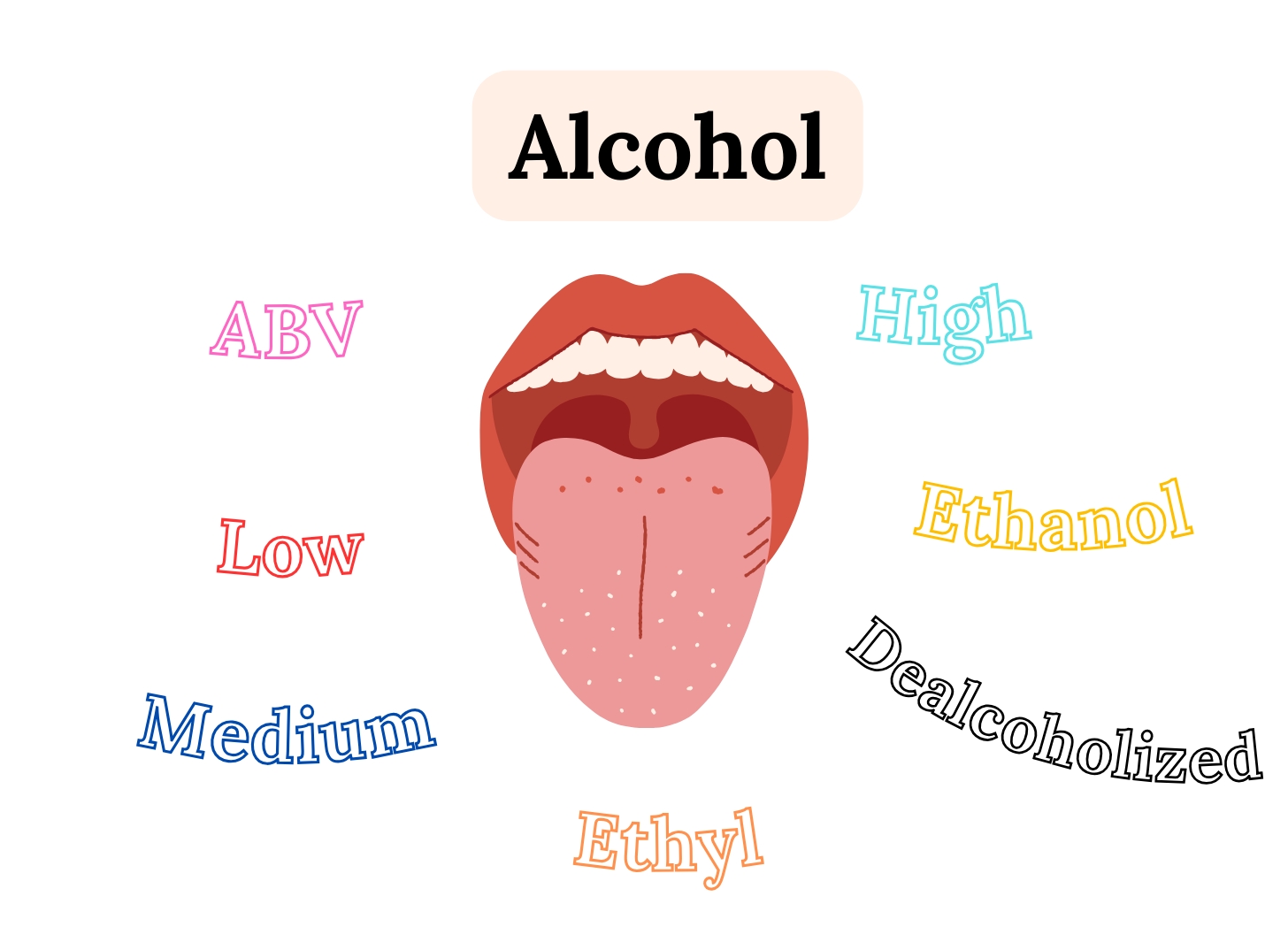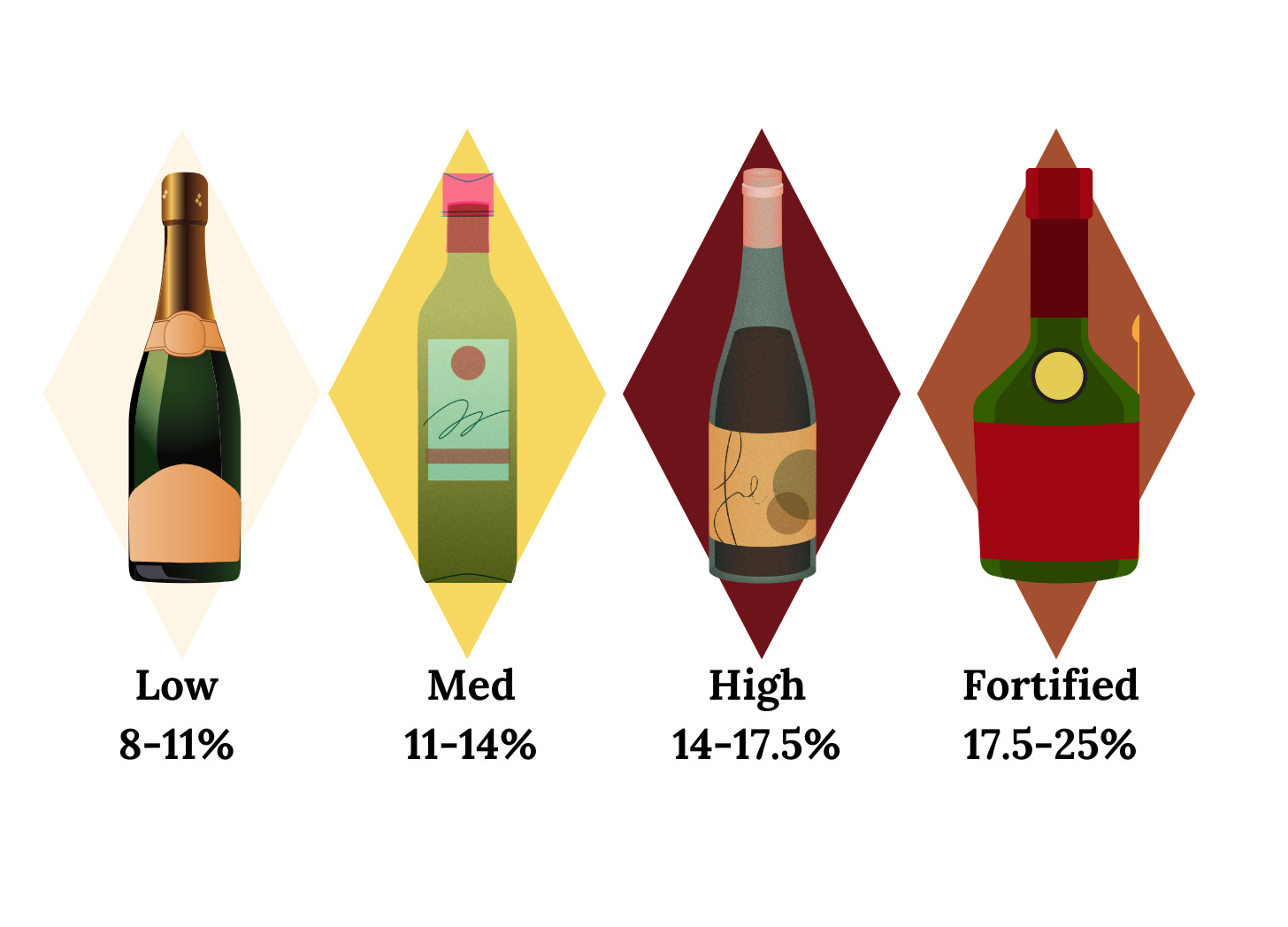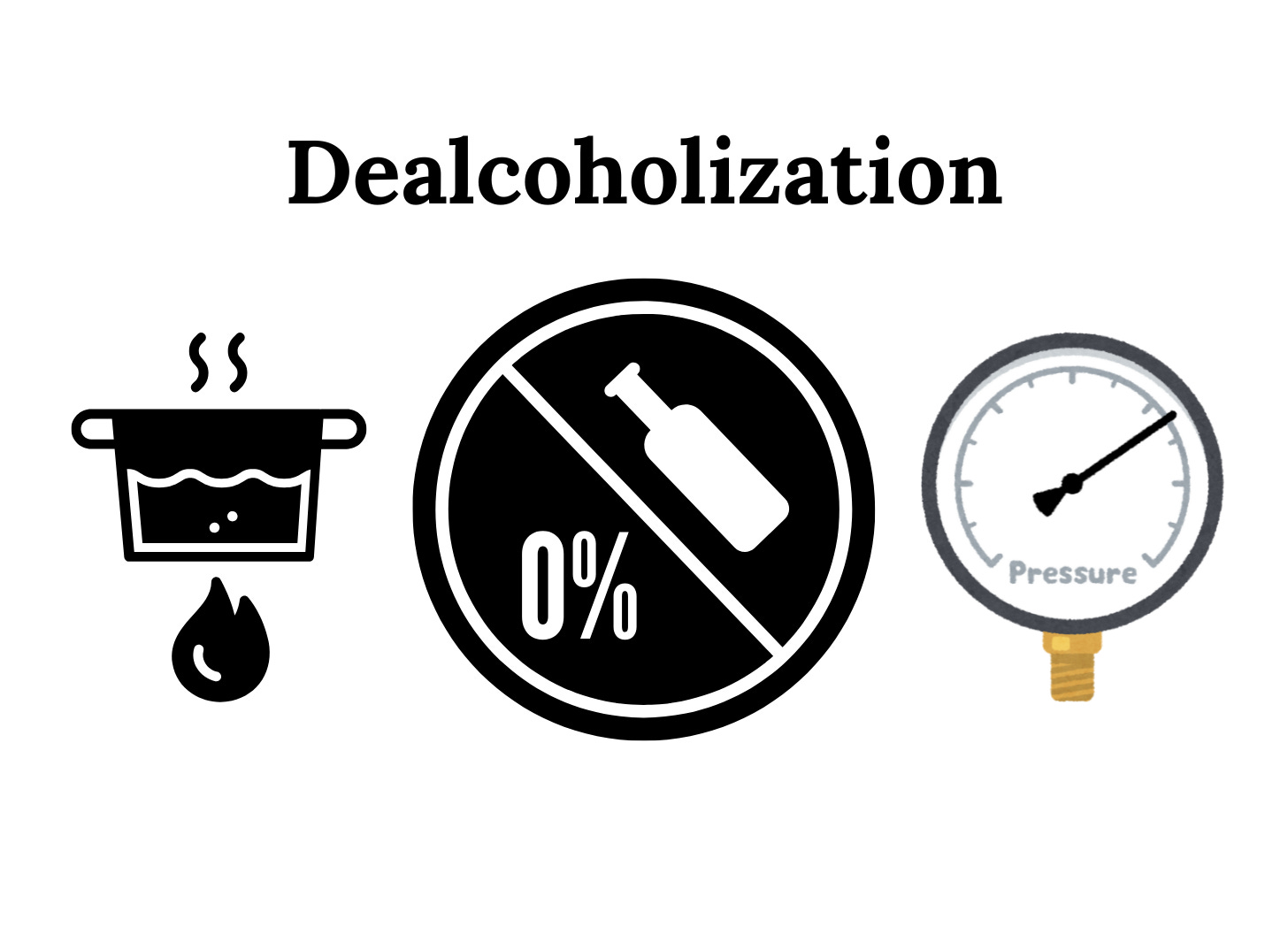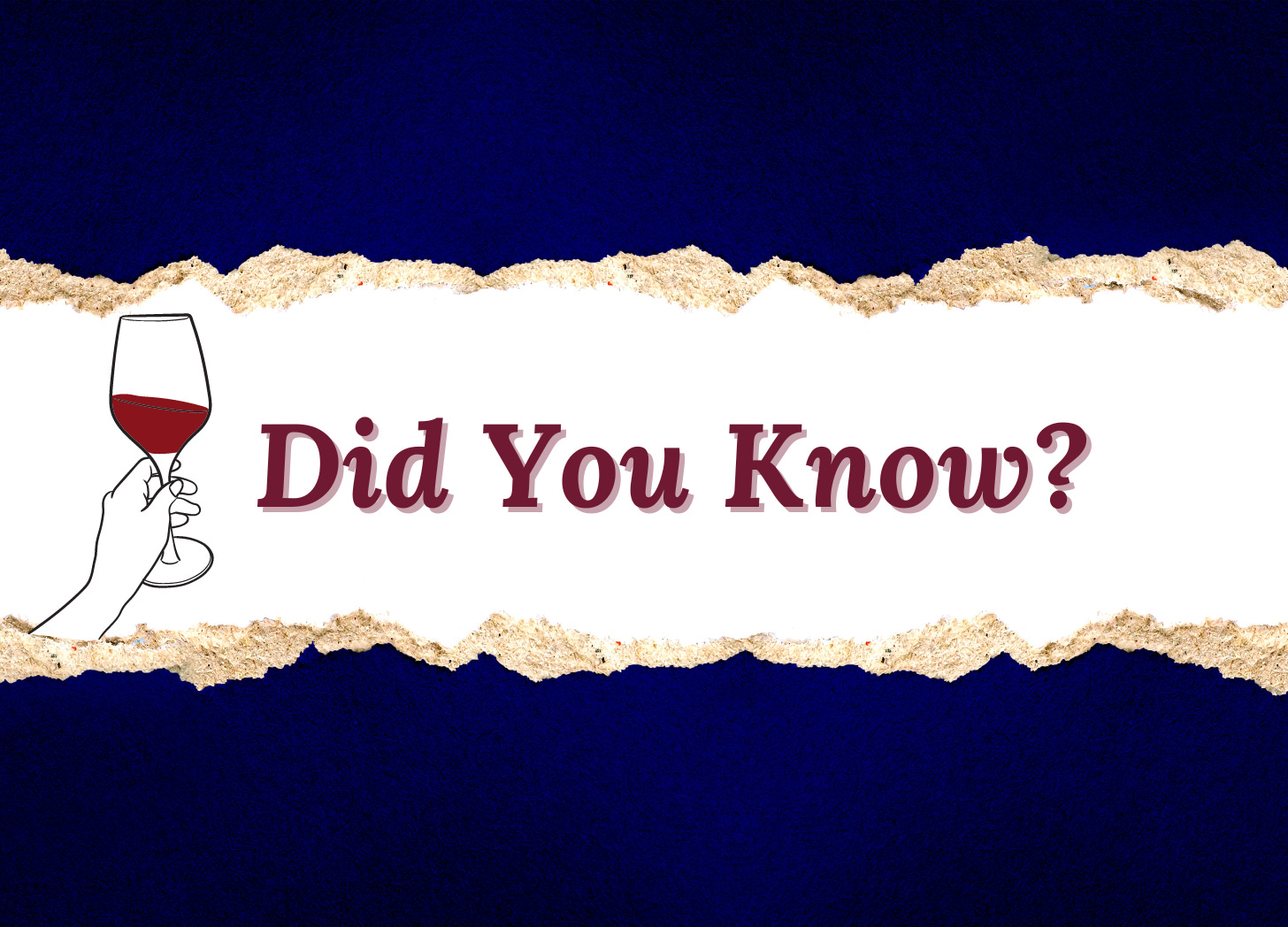Structure Deep Dive: Alcohol in Wine
We’re starting off 2025 (and saying goodbye to Dry January) with another component of a wine’s structure!
To refresh, we first published On the Palate: A Wine’s Structure, and then tackled Tannins and Acidity. This week, we’re looking at alcohol!
What type of alcohol is in wine?
The type of alcohol in wine is ethyl alcohol, or ethanol, which is produced when yeasts digest the sugars in the grape juice during fermentation. While it doesn’t contribute any taste or aroma, ethanol does greatly affect the body and mouthfeel of the wine, with higher alcohol wines having more viscosity and thus leading to a fuller-bodied wine. And obviously, alcohol is the part of the wine that leads to the whole spectrum of intoxication, from lightly buzzed to full-on drunk.
How much alcohol is in wine?
It varies. Some wines can be as low as 5.5% abv (that’s alcohol by volume), and we’ve heard of some monsters with abv as high as almost 18%, without being fortified (more on that later). However, most wines fall in the range of 8-16%. Here is an outline to what are considered low, medium, and high alcohol wines. Fortified wines are their own thing, but we’ll put them here anyway so you can see how they stack up. Note: These delineation points aren’t set in stone, nor universally agreed upon.
Low-alcohol wines: 8-11%
Medium-alcohol wines: 11-14%
High-alcohol wines: 14-17.5%
Fortified wines: 17.5-25%
But made cuter, that is:
There’s no ideal abv for wine—like with all elements of the structure, you’re aiming for the alcohol to be in balance with the other components. If you have a wine with big, powerful flavors and strong tannins, it’s going to need higher alcohol to stand up to it. Similarly, a wine with delicate flavors and soft tannins would be clobbered by high alcohol. Ideally, the grapes are harvested at the right Brix (sugar levels) that allows for the intended style.
Regardless what style of wine you’re drinking, it’s good to know the abv so that you can keep a handle on how much alcohol you’ve consumed. The “standard drink” is 12 oz of beer at 5% abv, 5 oz of wine at 12% abv, and a 1.5-ounce shot glass of distilled spirits at 40% abv. But, if you’re drinking a glass of 16% abv wine, that’s one-third more alcohol than is in a “standard” drink. Regardless of the math, make sure to drink a glass of water for every standard drink. The amount of alcohol in a bottle of wine is required to be listed on either the front or back label.
How does climate affect alcohol?
The amount of alcohol follows directly from how much sugar was fermented. Thus, grapes grown in warmer climates will develop more sugar, and thus make wine with more alcohol, than those grown in cooler climates. That’s why places like Napa, that have warm growing conditions, make much bigger wines than, say, the Willamette Valley.
That being said, the alcohol levels of wine have been creeping up over the last few decades because of climate change. Warmer climates mean riper grapes, riper grapes mean more sugar, and more sugar allows for higher alcohol levels. This has been a challenge for winemakers all over the world, and many viticultural techniques have been deployed to try and rein in the sugar content of the grapes. As a last resort, winemakers can dealcoholize their wine (more on that in a bit.)
What about fortified wine?
Fortified wines are in their own category because they have additional alcohol added to them, either during or after fermentation, that doesn’t result from the fermentation. Initially, wines were fortified with alcohol as a way to preserve them on their long journeys after they left the winery. Even though technology has advanced so that this is no longer needed, the cultural traditions remain, and you can find fortified wines all over the world. They can be dry to sweet and everything in between, with a range of flavors and aromas. A few of the more common fortified wines are Vermouth, Port, Sherry, Madeira, and Marsala, but there are many more. They usually range from 17-25% abv.
What about non-alcoholic wine?
Non-alcoholic wine has gotten more press in recent years as many people try to cut out alcohol from their diets, but still want the social benefits of getting together over drinks. (We’re going to put aside the debate of whether or not this even qualifies as wine, as there are passionate debaters on both sides of the issue.) Some non-alcoholic “wines” are not made from wine at all, but are made via other ingredients. Then, there is non-alcoholic wine that has been dealcoholized, which is what we’ll be discussing here.
The history of dealcoholized wine is relatively recent, with the first techniques taking advantage of the fact that alcohol boils at a lower temperature than water does (174° F vs. 212° F ). So, they would simply boil the alcohol out of the wine, and while this did technically work, everyone agreed that the results were not very good. That’s because at that high of a temperature, this process also cooked the wine and changed its flavors.
The next iteration of dealcoholization took advantage of the same chemical properties of wine and water, but also tinkered with another element: pressure. Reducing the pressure lowers the boiling point, so this process would boil the wine under a vacuum so that the flavors weren’t cooked. But, that also didn’t totally work, because, as we mentioned up top, alcohol is one of the main components of a wine’s structure, so removing it will also throw everything off balance. This then required more tinkering, sometimes with additives, to get the wine back into a, admittedly different, balance.
This is still a developing science, with new advancements being made all the time, and heated disagreements about whether or not these are even wines, or are even good, or are even worth pursuing. Leaving that all aside, we’ll put in our own two cents and say at the end of the day a dealcoholized wine will be a industrially processed product, and usually only performed on wines that are already made in an industrialized manner, and these are not the wines we want to be drinking, anyway. Because it comes in a bottle and somewhat shelf-stable, many people forget, but wine is an agricultural product. Just as we prefer to shop for our veggies from small, local farms, we want to buy our wine from the smaller producers with environmentally responsible practices, and who aren’t making wine in an industrialized manner—something that really makes us want to raise a glass and say “cheers”!
Fun Fact: It’s Not Just Humans that Get Drunk
Alcoholic fermentation doesn’t just happen when it’s orchestrated by humans. Fruits will naturally ferment their sugars if the conditions are right, and will inebriate any wildlife that takes a bite at the right time. There are reports of birds, deer, elk, and more all eating fermented fruit and the getting drunk. I wonder if they get the same hangovers and accompanying feelings of regret that we do?







Thanks for this well writen post!